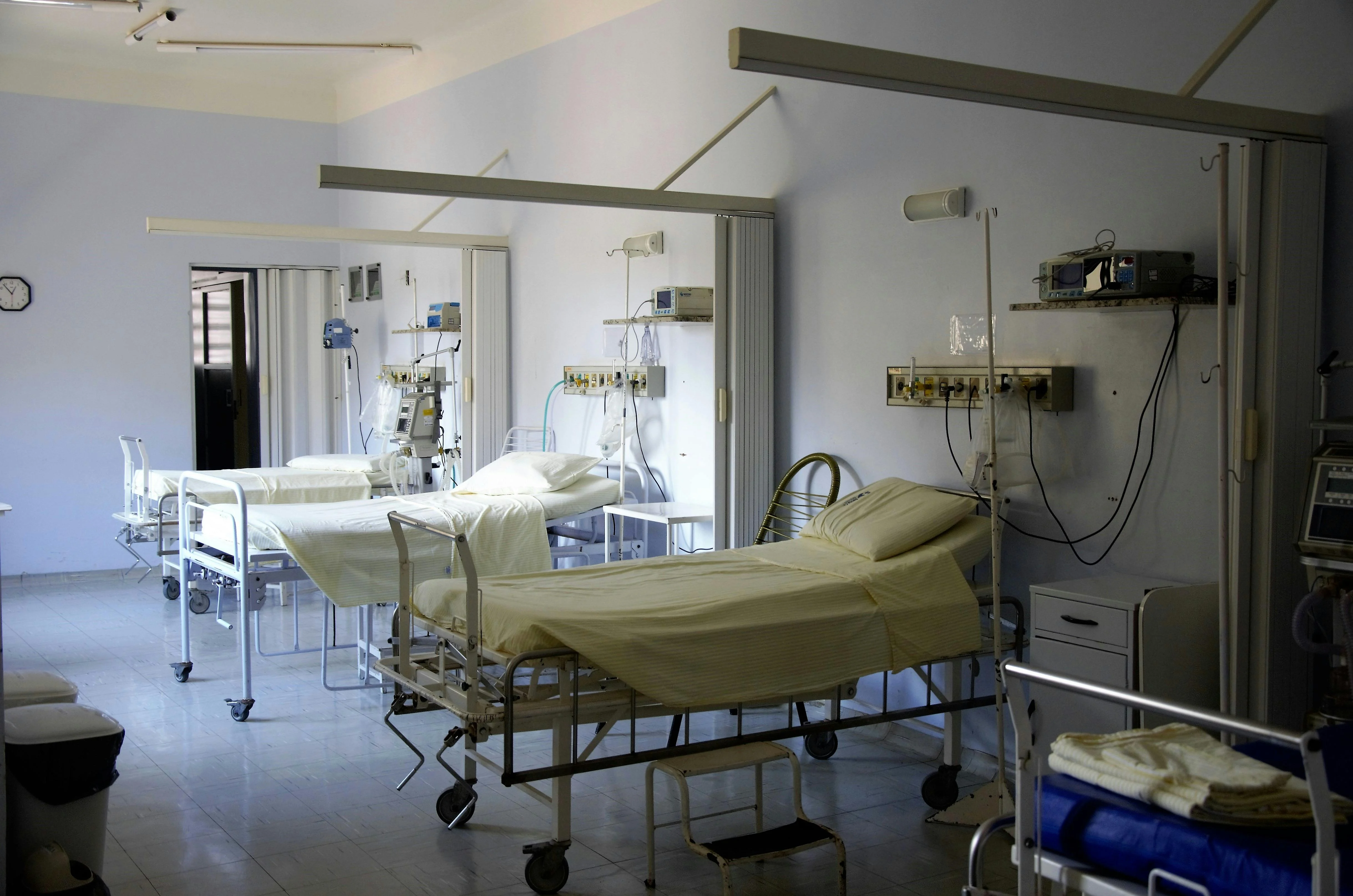What is Health Equity & How to Improve It

In an ideal world, everyone would have the same opportunities to attain their highest level of health—a concept defined by the CDC as health equity. However, the reality is far from perfect, as various barriers obstruct individuals and communities from accessing quality medical care, nutritious food, and essential health education. Health equity extends beyond mere healthcare; it encompasses a holistic approach to ensuring that every population, regardless of location or socioeconomic status, receives the best available medical services.
This blog explores the multifaceted challenges surrounding health equity, delving into the profound impact of factors such as nutrition, employment, education, location, and mental health. From the scarcity of fresh, affordable food options to the decline in access to healthcare facilities in rural areas, we will dissect the complex web of issues contributing to health inequities.
As we navigate these challenges, it becomes evident that achieving health equity requires a comprehensive and collaborative effort. From promoting health and nutrition education in schools to advocating for stricter regulations on harmful food additives, the path to health equity demands a broad spectrum of solutions. This article will also shed light on innovative technologies, providing financially viable options for smaller hospitals to access advanced surgical navigation tools, thus contributing to closing the technology gap in healthcare.
Join us in uncovering the roots of health inequities, exploring statistical insights, and discovering actionable solutions that could pave the way for a healthier, more equitable future for communities across the United States and beyond.
What is Health Equity?
The CDC defines health equity as “[when] everyone has a fair and just opportunity to attain their highest level of health.” In a world with perfect health equity, all would have access to quality medical care, nutrition, and education on health and wellness.
Health equity is about more than just medical care. It’s about bringing the very best medicine and services that we can to every population. There are barriers to this though. Location, for instance, is a barrier that can prevent some individuals and communities from having the opportunity to improve their health. Organizations can only affect this by building healthcare facilities (or grocery stores with fresh food) in these areas, or by transporting providers out to these locations.
Read on to learn how this and other factors lead to health inequities, what we can do about it, and why it’s important.
The Challenges of Health Equity
The cost of and access to good nutrition and medical care can create some of the greatest divides in health equity. Some simply do not have access to fresh fruits, veggies, healthy proteins and fats, and many do not have access to a quality medical facility.
Let’s talk about some of the ways health equity is impacted by the environment and opportunities within a community.
Nutrition Education and Cost
Some individuals grow up in families and communities with negative eating habits. Some of these individuals simply do not have the knowledge necessary to make good dietary decisions because they have never been exposed to the right information.
Others do not have access to the necessary resources to eat healthy. They do not have the financial means to purchase the more expensive, healthy food they need.
According to the U.S. Department of Agriculture, there were approximately 12.8% of households in 2022 that were food insecure. These households were “uncertain of having or unable to acquire enough food to meet the needs of all their members because they had insufficient money or other resources for food.”
Jobs
Some do not have jobs available in their local community that pay well enough for them to afford healthcare, proper nutrition, or hygiene. Others lack the education or experience to qualify for an occupation that pays enough for these privileges.
The Census Bureau estimated that in 2021, 11.6% of Americans (around 38 million people) lived at or below the poverty line. The poverty threshold for that year was $27,740 for a family of four and $13,788 for an individual.
Lack of Health Education
Wise health decisions can only be made when people have the proper education. If someone grows up in an environment where they are never taught basic health principles, then they cannot make informed decisions. This would include knowledge such as what to do for common sicknesses, signs of chronic disease, vitamins and minerals that are necessary for health and vitality, the differences between processed and whole foods, etc.
Depending on your upbringing and environment, some individuals may never have been exposed to these health basics. Bringing this knowledge to all communities is an important part of health equity.

Geographical Location
Location can play a major role in whether a community has access to what they need for good health. In an interview we conducted with Emilie Johnson, Family Nurse Practitioner and Clinic Manager of the Navajo Mountain Clinic (UNHS), Emilie reflected on how location impacts the remote communities she serves in southeastern Utah.
“Location is by far the most challenging obstacle faced by the communities we serve”, said Emilie. “The location I serve is the most remote of the lower 48 states. It’s 90 miles away from Kayenta, Arizona, and 90 miles away from Page, Arizona. Those are the two closest towns. Because the people in this area just don’t have much money, it’s difficult for them to even have the gas money to get to these towns to purchase nutritious food or visit the doctor. Most live on highly processed, packaged foods which are very poor for their health. It’s not that they just don’t choose to eat well, they simply don’t have the opportunity to eat well in the first place.”
If a patient has Medicare or Medicaid, Emilie's facility can transport them for healthcare services such as physical therapy. But for patients who don’t have this coverage, sometimes they are simply out of luck. Emilie has patients who’ve needed physical therapy for years, but they simply can’t get it due to the cost.
Mental Health Equity
Mental health also plays a role in general health equity. When you don’t have a good-paying job, you’re not eating well, and you’re impoverished, it takes a toll on the mind. This can make caring for your health or attempting to change your circumstances difficult.
According to John Hopkins Medicine, around 26% of Americans age 18 and up struggle with a diagnosable mental disorder in a given year. And the National Alliance on Mental Illness reports nearly 1 in 25 adults live with a severe mental illness.
Good Health Depends on Many Factors
All of these factors play a role in people’s overall health. You need to make a certain amount of money to get the right nutrition and to get yourself to the right appointments. So, you need to have a job capable of covering these costs. You need to have access to proper nutrition, but you also need to understand what proper nutrition even is. You must also live in a location where these opportunities are available. Many do not have these advantages.
Recent Decline in Hospital Access for Remote Areas
Many rural communities have seen a recent decline in hospital access. According to Becker’s Hospital CFO Report, many rural hospitals are currently in crisis mode. The report indicates that 104 rural hospitals have closed since 2005, 37 of which have closed in the last 3 years alone. In addition, another 89 facilities have discontinued offering inpatient care.
This recent decline in rural hospitals is leading to health inequities for the people in these remote areas. If they do not have access to a healthcare facility, then they simply cannot receive proper care. They may travel further for healthcare needs, but what about emergency procedures? Or what about those who cannot afford the gas money to travel?
Solutions for Health Equity
The solutions for health equity are broad and complex and will certainly not all be covered in one article. But let’s discuss a few solutions that could lead to greater health equity, in both the United States and the world.
Health and Nutrition Education in Schools
Our educational system plays a large role in whether or not the upcoming generation has a good understanding of how to keep their bodies fit and healthy.
This includes understanding the basics of healthcare, such as how to navigate insurance plans, what to do when you or a loved one is ill, how to communicate needs to doctors and medical specialists, etc.
This also includes foundational knowledge of the function of vitamins, minerals, and other micronutrients in the body, and how to eat a diet composed of the proper balance of carbs, protein, and fats.
Stricter Regulations for Food Additives and Chemicals
One of the great challenges that faces the U.S. is the presence of many food additives and chemicals that are banned in other European countries. For people to enjoy quality health, corporations must prioritize citizens’ health over profits, as they are responsible for the effects of the food products they produce.
Ingredients like potassium bromate, BHA, BHT, brominated vegetable oil, and Yellow No. 5 are all chemicals that have been banned by the European Union but continue to be used in common foods consumed by U.S. citizens.
Until health is valued above profitability, people will continue to suffer adverse effects.
Local Governments Working with Local Businesses to Improve Health Equity
If local governments can work hand in hand with businesses, perhaps they can ensure more grocery stores are constructed in locations where they are needed so communities have access to fresh produce. Perhaps local governments can prioritize building roads to improve transportation in rural areas so members of the community can access healthcare facilities faster. Maybe governments can also coordinate grants that provide assistance for hospitals in rural locations so they can continue running.
Each of these efforts could improve the circumstances of those who suffer health inequities.

Increasing Health Equity Through Affordable Medical Technology
In the pursuit of health equity, we find ourselves at the crossroads of various challenges—barriers woven into the fabric of society, impeding the path to optimal well-being for all. Health equity, as defined by the CDC, envisions a world where every individual, irrespective of circumstance, has a fair and just opportunity to reach their highest level of health. Our exploration of this complex landscape has revealed the intricate dance of factors such as nutrition, employment, education, location, and mental health, all shaping the contours of health inequities.
From the scarcity of nutritious food to the decline in access to healthcare facilities, the intricacies of this issue demand a comprehensive and collaborative response. The journey toward health equity calls for a concerted effort, encompassing initiatives like promoting health education in schools, advocating for stricter regulations on harmful food additives, and leveraging innovative technologies to bridge healthcare disparities.
As we unravel the roots of health inequities, our understanding deepens, and statistical insights underscore the urgency of action. The challenges posed by the environment and opportunities within communities—from the lack of nutrition education to the dwindling access to medical care in remote areas—are stark realities that demand our attention.
In the realm of healthcare, the disparity in access to advanced medical technology between smaller and larger hospitals is a glaring issue. The prohibitive costs often leave smaller hospitals without the cutting-edge tools available to their larger counterparts. However, the solution lies in the pursuit of innovative approaches that can bring high-quality medical technology within reach through cost-effective means.
Our commitment is rooted in bridging this technological gap, ensuring that both large and small hospitals have access to critical advancements. Through our dedicated efforts, we have provided Cryptochart for free to hundreds of hospitals across the U.S. We’ve also brought key technologies like AR surgical navigation (VisAR) to remote countries that previously could not afford it.
For a closer look at our transformative products, explore them further here. Join us in fostering a healthcare landscape where technology knows no size limitations, and every hospital, regardless of scale, can embrace the future of medical innovation.
%20(3).png?width=1555&height=462&name=Novarad%20EHS%20Logo%20Full%20Color%20(1)%20(3).png)